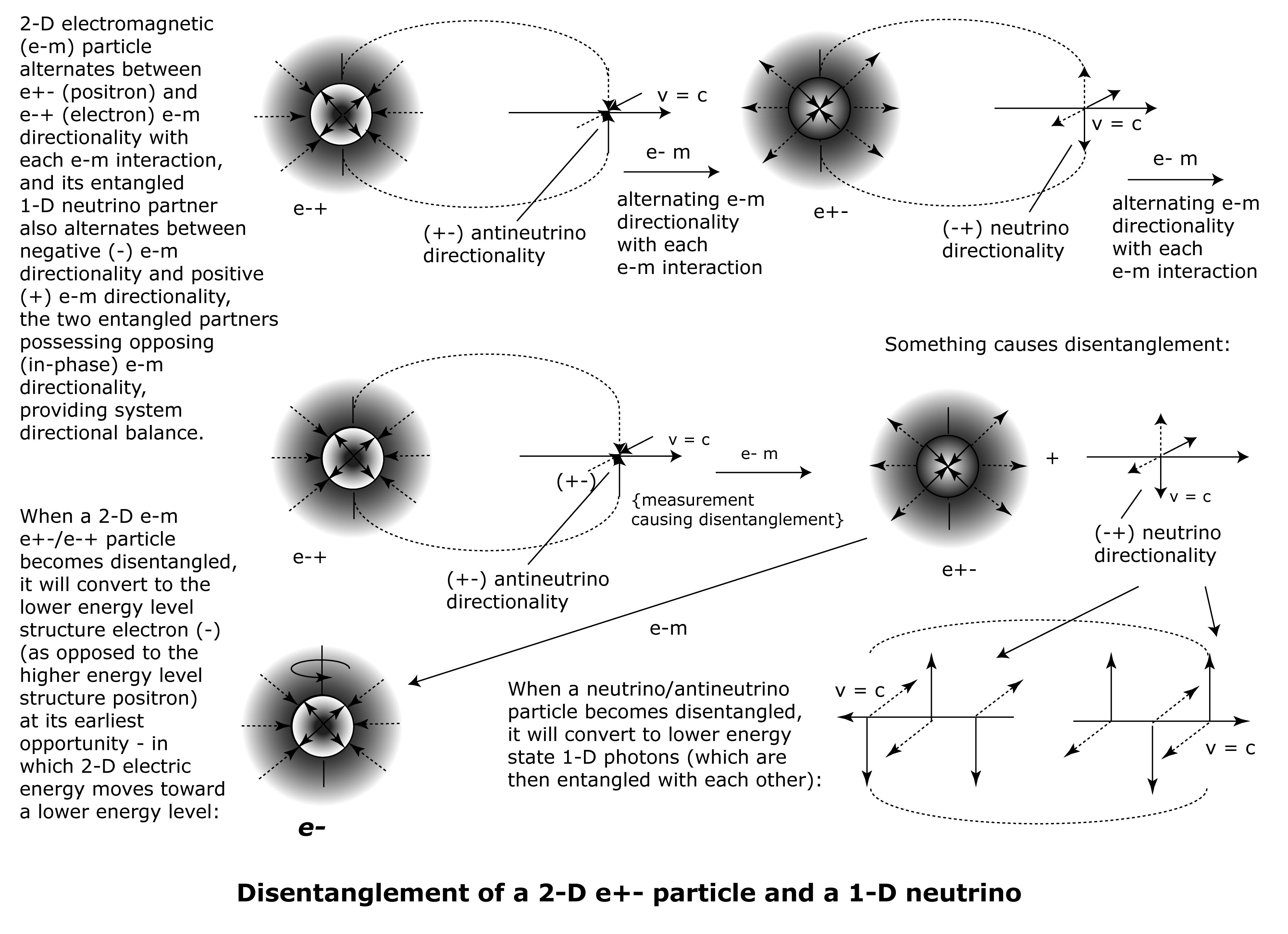Neutrinos (and anti-neutrinos) are 1-D photons overlapped on themselves: one photon exists simultaneously on top of the other, perpendicular to each other.
Neutrinos have different entanglement properties than their constituent photons because they are symmetrical in structure. As a result, they can become entangled with 2-D particles, each possessing simultaneous alternating e-m directionality. However, because they consist of different dimensions, they are not identical, and cannot possess interchanging identities in the process. This is not a strong entangled relationship compared to entanglement of identical energy, such as an electron and a positron.
Neutrinos probably cannot exist without being entangled to a partner because they represent a higher energy level structure than their constituent photons. When a neutrino becomes disentangled from its partner, and is “isolated” (does not interact with any other energy system), it will convert to its lower energy structure photons. This may explain why physicists observe less solar neutrinos than expected.
In a similar manner, the neutrino’s 2-D e-+/e+- partner when disentangled, if isolated, will convert to an electron because it has a lower energy level structure than a positron.
Once a beta particle is emitted from an atomic nucleus, it is likely that its entangled neutrino/antineutrino partner soon becomes disentangled due to the weak entanglement of a massless 1-D energy system with a 2-D energy system that possesses a gravitational energy gradient.
However, high energy photons, such as gamma rays, might breakdown to produce an entangled neutrino-antineutrino pair, representing a stronger, more stable entangled relationship.
